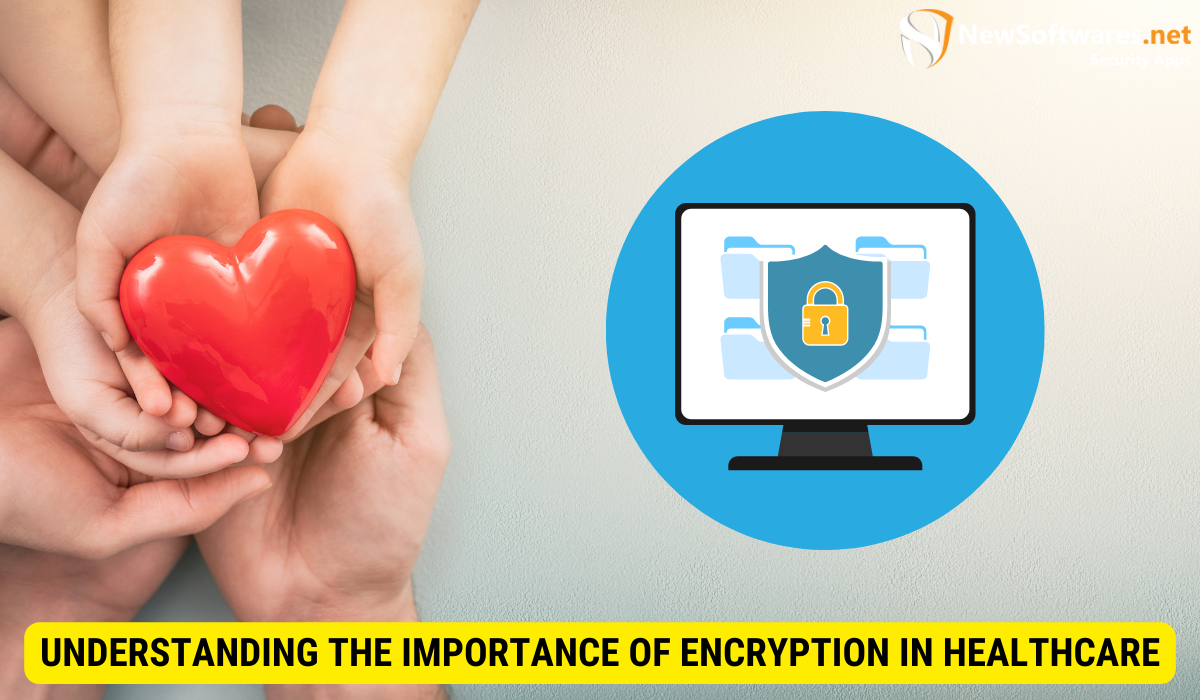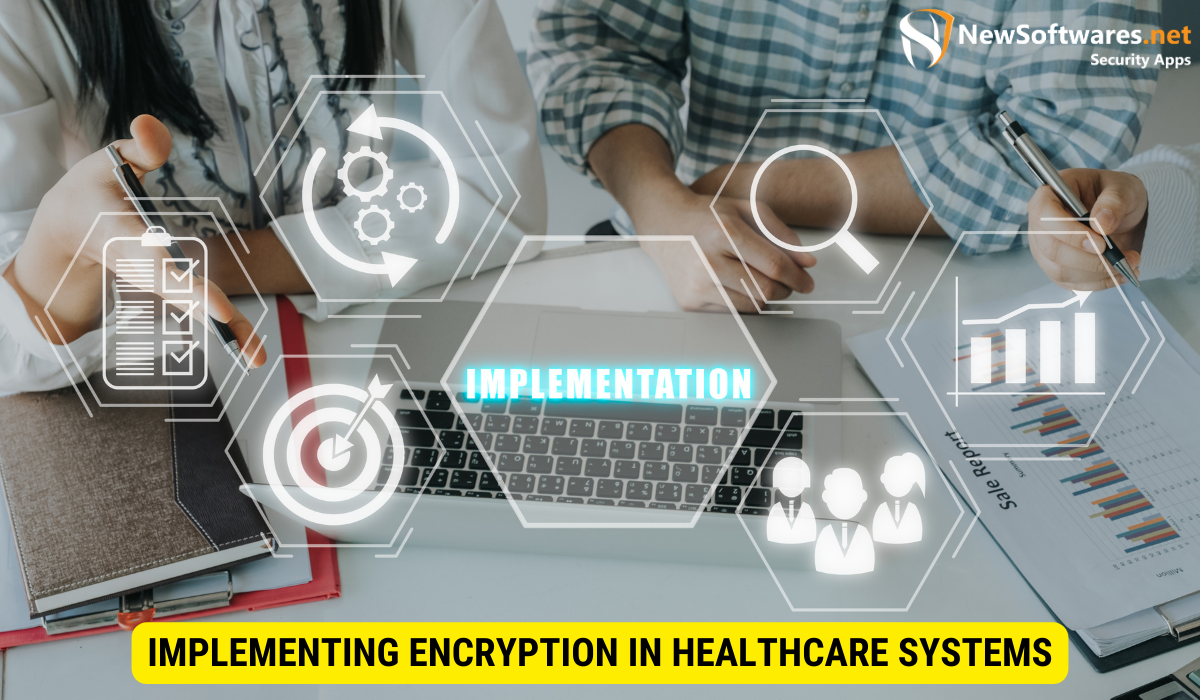Encryption is required for sending medical data to ensure the confidentiality, integrity, and security of sensitive patient information.
In today’s digital age, where information is easily available and vulnerable to various threats, ensuring the safety and privacy of sensitive data is of utmost importance. This is particularly crucial in the healthcare industry, where the protection of patient data is not only a legal requirement but also vital for maintaining trust and confidence in medical institutions. Encryption plays a pivotal role in safeguarding medical data from illegal access and ensuring its confidentiality and integrity. Let’s explore the importance of encryption in healthcare, different types of data encryption, legal requirements, encryption standards, and the implementation of encryption in healthcare systems.
Understanding the Importance of Encryption in Healthcare

Data encryption serves as a protective shield for sensitive information, for instance patient records, medical history, and personal details, that need to be transmitted or stored securely. Encryption converts this data into an unreadable format, making it virtually impossible for unauthorized individuals to decipher and misuse it. By utilizing encryption techniques, healthcare organizations can mitigate the risk of data breaches and prevent the potentially catastrophic consequences that can arise from unauthorized data access.
The Role of Encryption in Protecting Patient Data
Encryption acts as a powerful mechanism in maintaining the confidentiality of patient data. In the event of a security breach or unauthorized access, encrypted data is not readily usable, as it requires cryptographic keys or passphrases to decrypt and convert it back into its original form. This ensures that even if a breach occurs, the data remains protected and unusable to unauthorized individuals.
Encryption also plays a vital role to maintain data integrity. By utilizing cryptographic algorithms, healthcare organizations can ensure that the data remains intact and has not been tampered with during transmission or storage. This assurance is essential, as any tampering or alteration of medical data can lead to misdiagnosis, incorrect treatment, or compromised patient safety.
Why is Encryption Necessary in the Medical Field?
The medical field is rife with sensitive patient information that is highly valuable to cybercriminals. Medical records contain personal details, medical history, insurance information, and even financial data. This wealth of information can be exploited for various malicious purposes, including identity theft, fraudulent activities, and blackmail.
Furthermore, healthcare organizations frequently exchange patient information with other healthcare providers, insurance companies, and laboratories. This transmission of data across networks poses a significant security risk, as it can be intercepted by cybercriminals. Encryption provides a crucial layer of protection to ensure that the information remains protected and confidential throughout its journey.
Different Types of Data Encryption
There are several types of data encryption utilized in the healthcare industry, each with its own strengths and applications. Let’s explore some of the commonly used encryption methods:
Symmetric Encryption
Symmetric encryption, also recognized as secret key encryption, includes the use of a single key to both encrypt and decrypt the data. This type of encryption is classically faster and more efficient than other methods. However, it requires the secure exchange of the encryption key between the sender and recipient, which can be challenging to manage in large-scale healthcare systems.
Asymmetric Encryption
Asymmetric encryption, also recognized as public-key encryption, utilizes two separate but mathematically related keys: a public key for encryption & a confidential key for decryption. This encryption method allows for secure communication without the need for exchanging encryption keys. However, asymmetric encryption is computationally more rigorous and slower than symmetric encryption.
Hash Functions
Hash functions are cryptographic algorithms that generate a fixed-size message digest, also known as a hash code, from the input data. This hash code can verify the integrity of the data, as any changes to the input will result in a different hash code. Hash functions are usually used to protect the integrity of passwords and ensure that they have not been compromised.
Legal Requirements for Encrypting Medical Data
The healthcare industry is subject to various legal regulations and compliance measures aimed at protecting patient data. Two prominent regulations that mandate the encryption of medical data include:
HIPAA and Data Encryption
The (HIPPA) Health Insurance Portability & Accountability Act is a Federal law in the United States that sets values for the protection of sensitive patient data. HIPAA mandates the implementation of encryption for electronic protected health information (ePHI) to safeguard its confidentiality, integrity, and availability. Failure to comply with HIPAA can result in severe penalties and reputational damage.
GDPR and Medical Data Protection
The GDPR is a complete data protection regulation applicable to all European Union (EU) member states. Under GDPR, healthcare organizations handling medical data are necessary to apply appropriate technical and organizational measures, including encryption, to protect personal data from unauthorized access and breaches. Non-compliance with GDPR can consequence in hefty fines and legal repercussions.
Encryption Standards in the Healthcare Industry
The healthcare industry adheres to various encryption standards to make sure the highest level of security and protection for patient data. Some of the commonly utilized encryption standards include:
Advanced Encryption Standard (AES)
AES is a symmetric encryption algorithm extensively adopted for secure data transmission and storage. It is recognized as a highly secure encryption standard and has been approved by government agencies for protecting classified information. AES employs a variable key length of 128, 192, or 256 bits, making it highly resistant to brute-force attacks.
(SSL) Secure Sockets Layer & Transport Layer Security (TLS)
SSL and TLS are cryptographic protocols that offer secure communication over computer networks. They utilize asymmetric encryption to establish a secure connection between a server and client, ensure the secrecy and integrity of data transmitted over the network. SSL and TLS are commonly used for securing online healthcare portals, electronic medical record systems, and telemedicine platforms.
Implementing Encryption in Healthcare Systems

Implementing encryption in healthcare systems requires a comprehensive approach that considers various factors, including the types of data to be encrypted, the systems and applications involved, and the encryption mechanisms adopted.
Encrypting Data at Rest
Encrypting data at rest involves securing sensitive information stored in databases, servers, and other storage systems. This protects the data from illegal access and ensures its confidentiality even if physical theft or unauthorized access occurs. Encryption keys should be securely managed and protected to prevent unauthorized decryption.
Encrypting Data in Transit
Encrypting data in transit ensures the secure transmission of sensitive information across networks or during electronic exchanges. This can be achieved through the use of secure communication protocols such as SSL/TLS, which encrypt the data before transmission and decrypt it at the receiving end. Secure channels, virtual private networks (VPNs), and encryption gateways play a vital role in safeguarding data during transmission.
Key Management and Access Controls
Proper key management is important in maintaining the safety of encrypted data. Robust access control measures must be implemented to ensure that only allowed individuals can access the encryption keys and decrypted data. This includes using strong authentication mechanisms, role-based access controls, and habitual audits to maintain the integrity of the system.
Key Takeaways
- Encryption is essential in the healthcare industry to protect patient data from unauthorized access.
- There are different types of encryption, including symmetric encryption, asymmetric encryption, and hash functions.
- Legal requirements, such as HIPAA and GDPR, mandate the encryption of medical data.
- The healthcare industry follows encryption standards, such as AES, SSL, and TLS, for secure data protection.
- Implementing encryption requires encrypting data at rest, encrypting data in transit, and managing encryption keys and access controls.
Frequently Asked Questions
Is data encryption mandatory for healthcare organizations?
Yes, healthcare organizations are legally required to implement data encryption to protect sensitive patient data. Regulations such as HIPAA and GDPR mandate the use of encryption to safeguard electronic medical records and personal health information.
Which encryption method is the most secure for healthcare data?
The Advanced Encryption Standard (AES) is widely considered one of the most secure encryption methods for healthcare data. AES employs complex mathematical algorithms and variable key lengths, making it highly resistant to brute-force attacks and cryptographic vulnerabilities.
How does encryption protect patient data during transmission?
Encryption protects patient data during transmission by converting it into an unreadable format. The data is encrypted at the sender’s end using encryption keys, and only the intended recipient with the corresponding decryption keys can decipher and access the data.
What are the consequences of not encrypting medical data?
The consequences of not encrypting medical data can be severe and wide-ranging. Data breaches can result in compromised patient privacy, identity theft, financial fraud, legal liabilities, and reputational damage to healthcare organizations. Non-compliance with legal regulations, such as HIPAA and GDPR, can lead to hefty fines and legal repercussions.
How can healthcare organizations ensure secure key management for encryption?
Healthcare organizations should implement robust key management practices to ensure the security of encryption keys. This includes limiting access to authorized personnel, storing keys in secure hardware or key management systems, regularly rotating encryption keys, and conducting audits to identify and address any vulnerabilities or misuse.
Conclusion
Protecting sensitive patient data is of paramount importance in the healthcare industry. Encryption serves as a vital tool in ensuring the confidentiality, integrity, and accessibility of medical information. By implementing proper encryption techniques, healthcare organizations can safeguard patient data from unauthorized access, mitigate the risk of data breaches, and maintain compliance with legal regulations. It is fundamental for healthcare organizations to stay abreast of encryption standards, adopt best practices for data protection, and continually assess and enhance their encryption strategies to adapt to evolving cybersecurity challenges.
